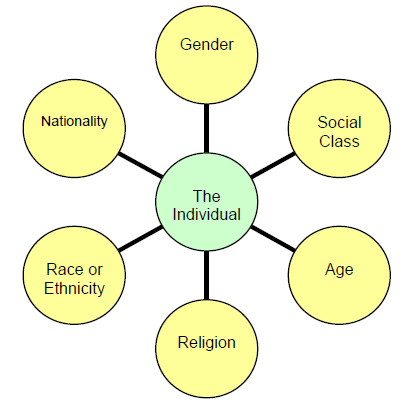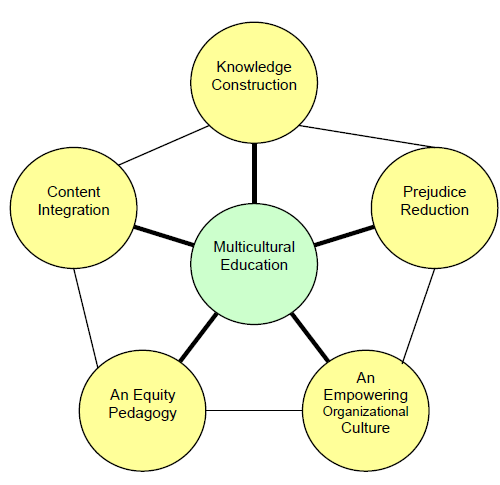Introduction
The population of rural and urban Nevada is becoming more diverse, which encourages those of us working in schools or in communities to examine how such changing demographics impact the way we engage with local residents (Sierra Pacific, 2007). Efforts to conduct effective educational programs within this context require us to be more culturally responsive and respectful. Integrating multicultural education in our work is one way to address the many issues related to equity, diversity, and identity.
This fact sheet, which defines multicultural education, is the first in the Multicultural Education Series. The other three publications in the series include (1) Need for Multicultural Education in Nevada, (2) Strategies for Inclusive Educational Programs, and (3) Personal Transformation and Multicultural Education.
This series is intended for youth workers, teachers, school personnel, Extension faculty and staff, and others who are working in communities. The goal is to create and implement more inclusive and culturally relevant educational programs.
Defining Culture
There are many ways that culture could be defined; however, most social scientists view culture as consisting primarily of the symbolic and intangible aspects of human societies. The essence of culture is in how the members of the group interpret, use and perceive tangible cultural elements such as artifacts and tools. Values, symbols, interpretations, and perspectives distinguish one people from another in modernized societies (Banks, 1994). People within a culture usually interpret the meanings of symbols, artifacts, and behaviors in the same or similar ways. A comprehensive definition is offered by Derman-Sparks, “ …the values, traditions, social and political relationships, and worldview shared by a group of people bound together by a combination of factors that include one or more of the following: a common history, geographic location, language, social class, and religion (Cronin, S., et al. 1998, p.160).” A cultural program consists of knowledge, concepts, and values shared by group members through systems of communication. Culture also entails shared beliefs, symbols, and interpretations within a human group.
Method
An individual may belong to several different cultural groups at the same time. Membership in one particular group does not determine behavior, but makes certain types of behavior more probable. Understanding the importance of each of these group’s characteristics, and the extent to which individuals have been socialized within these groups, gives us crucial insight into their behavior. Individual participants are members of several of these groups at the same time; however a person could display behaviors from their different groups to various degrees. For example, a Catholic woman may display more traditional gender roles than religious practices.

Source: Multiple Group Memberships Derived from Banks, 1997.
Defining Multicultural Education
Multicultural education is a vehicle for people who have different value systems, customs, and communication styles to discover ways to respectfully and effectively share resources, talents and ideas. It incorporates the idea that all students-regardless of their gender and social class, and their ethnic, racial, or cultural characteristics- should have an equal opportunity to learn. It recognizes that some students, because of these characteristics, have a better chance to learn in schools as they are currently structured, than do students who belong to other groups or who have different cultural characteristics.
Educators in the schools or communities face the effects of inequity related to such characteristics everyday in their work with children, parents, and community leaders as they conduct non-formal educational programming. Therefore, educators should be reminded that Multicultural Education is not something that we “do,” but rather it is an ongoing process of how we go about our work.
Goals of Multicultural Education
Through multicultural education, youth and adults become prepared to transform society to more effectively serve the needs and interests of all groups of people, especially those who have been marginalized. The hope is that the upcoming generation will have a desire to know how society really works and to analyze it for their own benefit. Multicultural Education helps to humanize all people.
Specific goals of Multicultural Education (Banks, 1997) are to:
- Develop and foster a democratic and just society where all groups experience cultural democracy and empowerment;
- Improve academic achievement of all students;
- Help participants to develop the knowledge, attitudes and skills needed to function within their own micro cultures, the US macro culture and other micro cultures, and within the global community; and
- Provide opportunities to gain cultural competency.
Dimensions of Multicultural Education
There are five broad dimensions of multicultural education, which are essential to successful multicultural education programs (Banks, 1997).

Source: Dimensions of Multicultural Education. Derived from Banks, 1997.
Content Integration
Involves using examples and content from a variety of cultures in education programs. Playing ethnic music during a program could be one way to include contributions from different cultural groups.
Knowledge Construction
Can be explored by helping students understand, investigate and determine how the implicit cultural assumptions, frames of reference, perspectives and biases within a discipline influence the ways in which knowledge is constructed within it. For example, youth could examine the media to determine its impact on gender stereotypes.
Prejudice Reduction
Is accomplished when program curriculum develops positive attitudes toward different racial, ethnic, and cultural groups. Educational programs that involve youth and adults from diverse backgrounds and provide opportunities to build relationships between one another can assist with prejudice reduction. Even activities which allow participants to explore their biases can lead to prejudice reduction through awareness.
Empowering Organizational Culture
Reduces barriers of program participation for youth and adults from diverse racial, ethnic and gender groups. Intricacies of the organization, such as rules and procedures, funding to non-traditional programs, and privileged treatment are examined. An educator can conduct a program at at a location such as a housing complex or community center, to avoid excluding students who may not h another area of their community.
Equity Pedagogy
Speaks to program delivery that reflects multicultural issues and concerns, which in turn facilitates the achievement and development of students from diverse racial, gender, social class and other cultural groups. Educators can examine the issues of their constituency to create programs that address their needs. For example, youth from families of a lower socioeconomic class often do not have the same opportunities to develop interviewing or resume writing skills as youth whose parents have white-collar jobs. Therefore, to further the development of these youth, a program on resume writing and interviewing may demonstrate an equity pedagogy.
Conclusion
Youth workers, teachers, school personnel, Extension faculty and staff, and others who are working in communities are faced with increased diversity when working with their constituencies. Utilizing multicultural education as an approach to education in schools and in communities helps to ensure that culturally appropriate programs addressing critical issues are accessible to more children, youth and families.
References
Banks, J.A. (1994). Multiethnic Education: Theory and Practice (3rd ed.). Boston: Allyn and Bacon.
Banks, J. and Banks, C., eds. (1997). Multicultural Education: Issues and Perspectives. Hoboken, NJ: John Wiley and Sons, Inc.
Cronin, S., et al. (1998). Future Vision Present Work: Learning from the culturally relevant anti-bias leadership project. St. Paul, MN: Redleaf Press.
Sierra Pacific Economic Development.
Meier, A.
2007,
Defining Multicultural Education Multicultural Education Series – No. 1,
Extension | University of Nevada, Reno, FS-07-53


